Happy Camp

Our project on the Ross Sea will take us far from heated facilities of McMurdo Station, so all members of our team need to attend "Happy Camp", a two day course on snow camping and basic Antarctic survival. Happy Camp is held out on the McMurdo Ice Shelf, and it is an immersion program in the true sense of the word: after a brief lecture and inspection of our Extreme Cold Weather (ECW) gear, we were driven out to the ice shelf, where the lectures continued al fresco on the Antarctic ice. There is nothing like the sound of flag markers snapping in the icy wind to keep your mind focused on listening very carefully to everything our instructors had to say. The goal of the first day was to familiarize the group with Antarctic survival basics: providing shelter, keeping warm, and keeping fed and hydrated. The idea was to give a day's worth of hands-on training, after which our instructors would leave and we would spend the night on the ice.
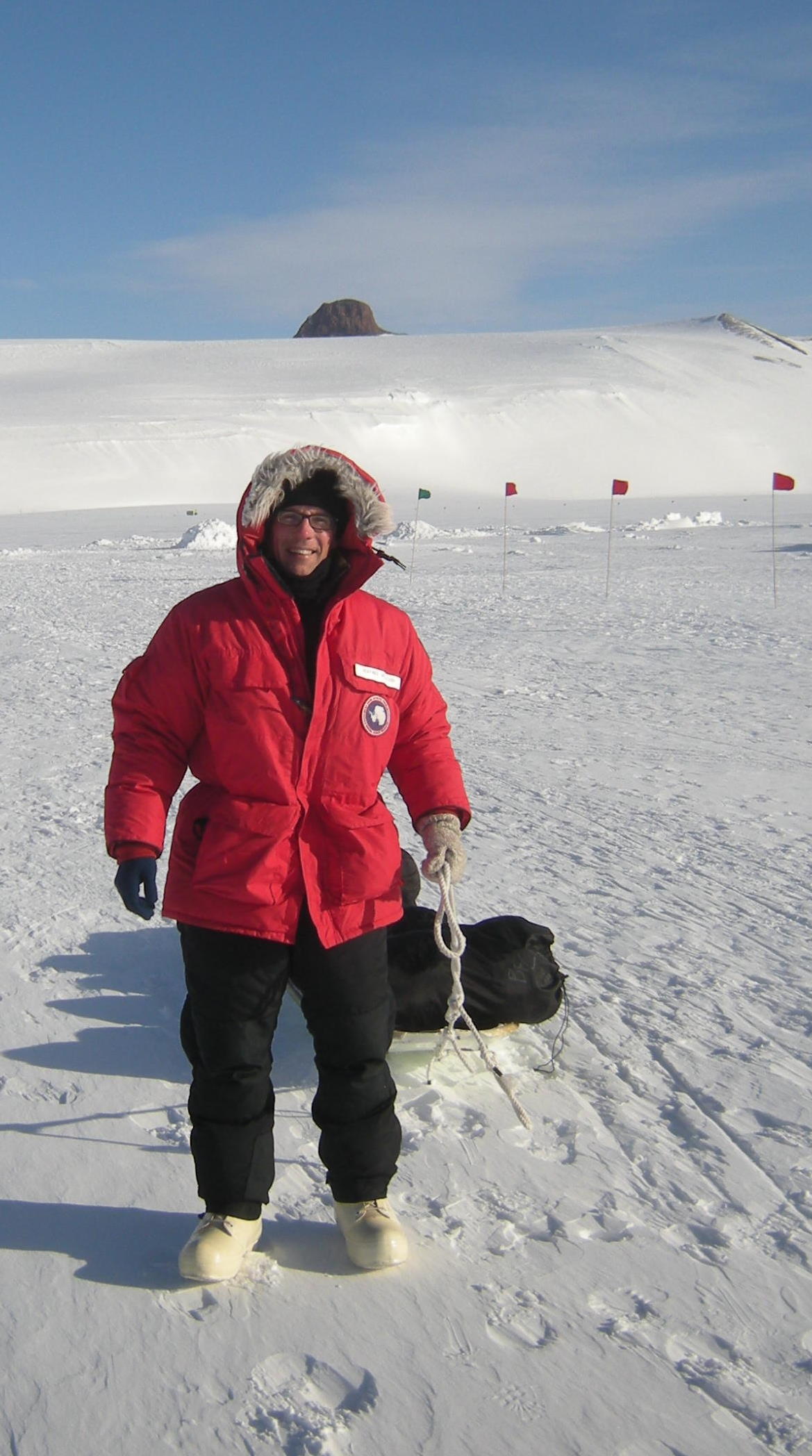
The first key item is the need for shelter, and we started with setting up tents and creating wind barriers. The best tent for Antarctic camping was designed over 100 years ago: the Scott tent, a four-sided teepee-like structure which can withstand winds up to 100 mph (most mountaineering tents tend to deform at wind speeds above 50 mph). The Scott tent has a wide skirt, so you can pile snow all around it for extra stability, and the tie downs can be buried deep in the snow - with a well placed snow anchor, the line to the tent will snap long before the anchor pulls out of the snow.
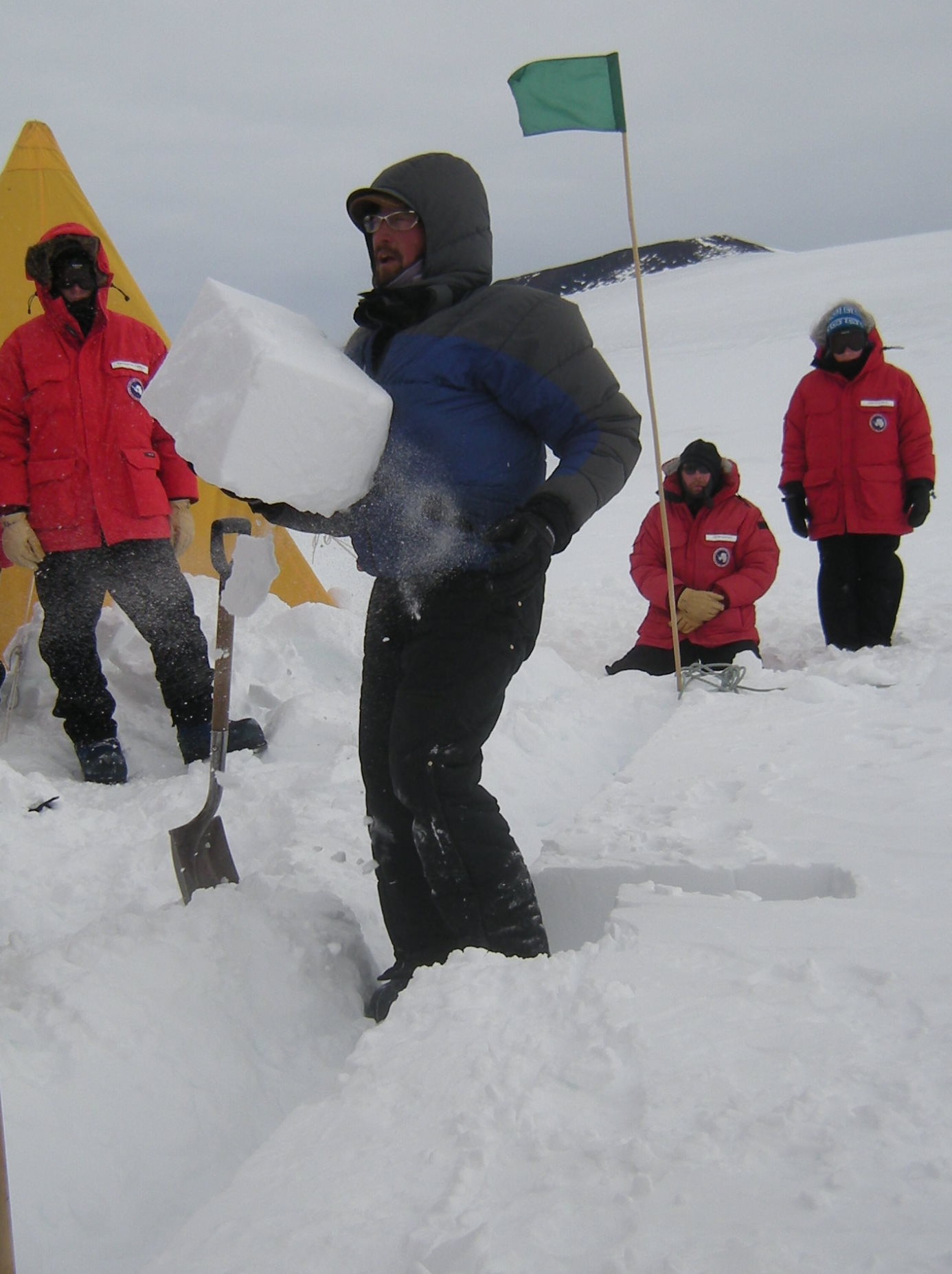
For additional wind shelter we learned how to quarry blocks of snow right from the surface. The snow on the ice shelf is well packed, and it is easy to carve large blocks of snow which felt just like polystyrene, and with them you could create walls and igloo shelters. We also learned how to build emergency snow trenches, which are slots carved down into the snow. Once you have dug down a few feet, a sleeping space is widened at the bottom, large enough to sit up in comfortably and roll around. The top is covered with snow blocks or (in an emergency) an inverted sled. Abigail elected to spent the night in one of these trenches, and she said that it was surprisingly warm and quiet. We also created a 5 foot tall windbreak out of snow blocks - this wall ran between the Scott tents, and kept the icy glacial winds from blowing our gear away.
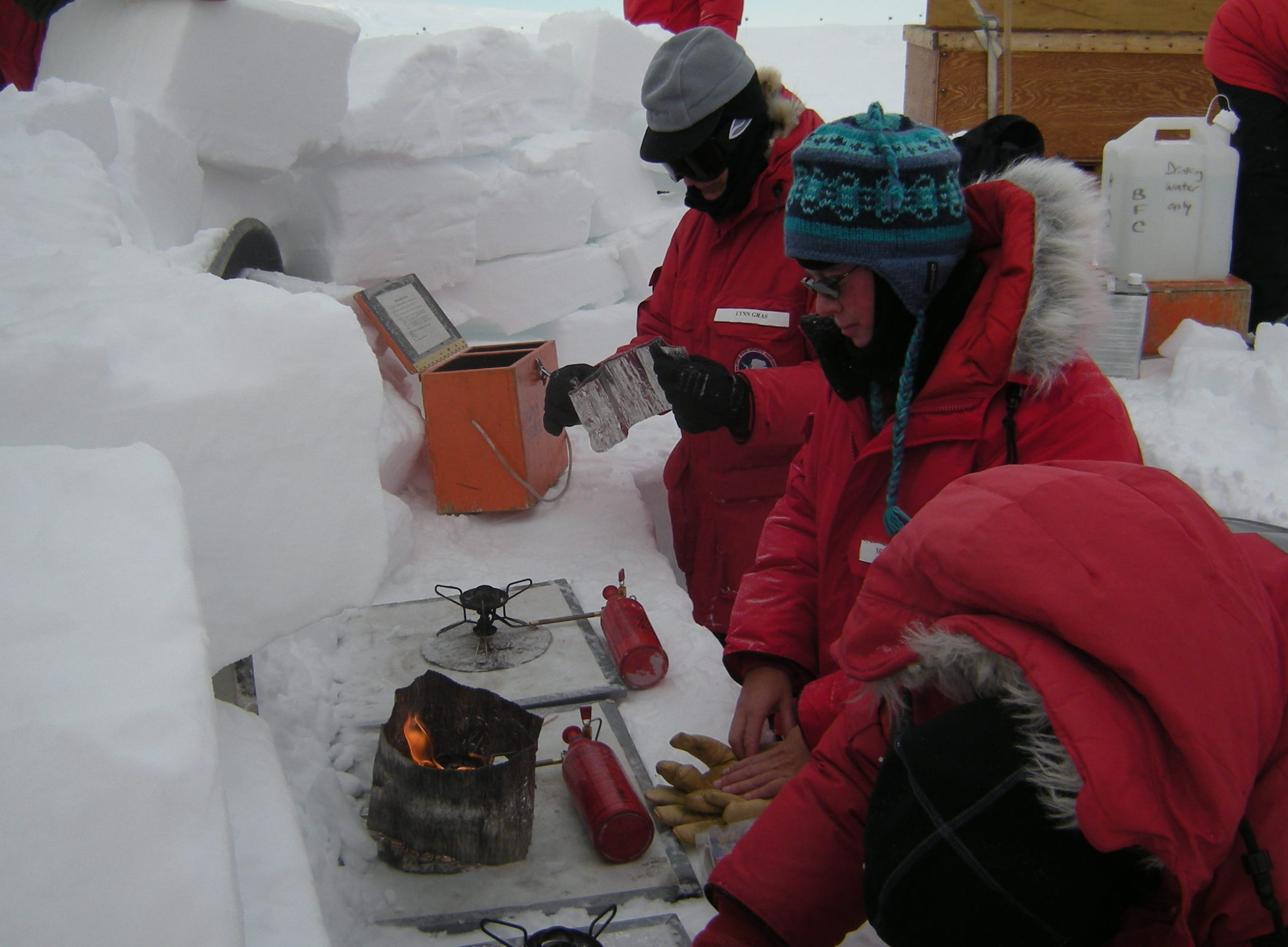
We also used a combination of trenching and snow blocks to create our 'snow galley', a temporary kitchen dug down in the snow and out of the wind. You can't have a campfire in Antarctica, but a hot beverage is the next best thing, and in a survival situation if could save your life. For our evening meal we stuck to the basics: instant soups, noodles, rice and freeze-dried meals - I don't remember Lipton Cup-of-Soup ever tasting quite so good!

The next day everyone was surprised at how well they slept - no one had any complaints of being cold, and the sleeping bags kept everyone warm. My only mistake was forgetting to bring my toothpaste inside the sleeping bag before I went to bed: it froze solid, and took hours to thaw back into a usable paste.
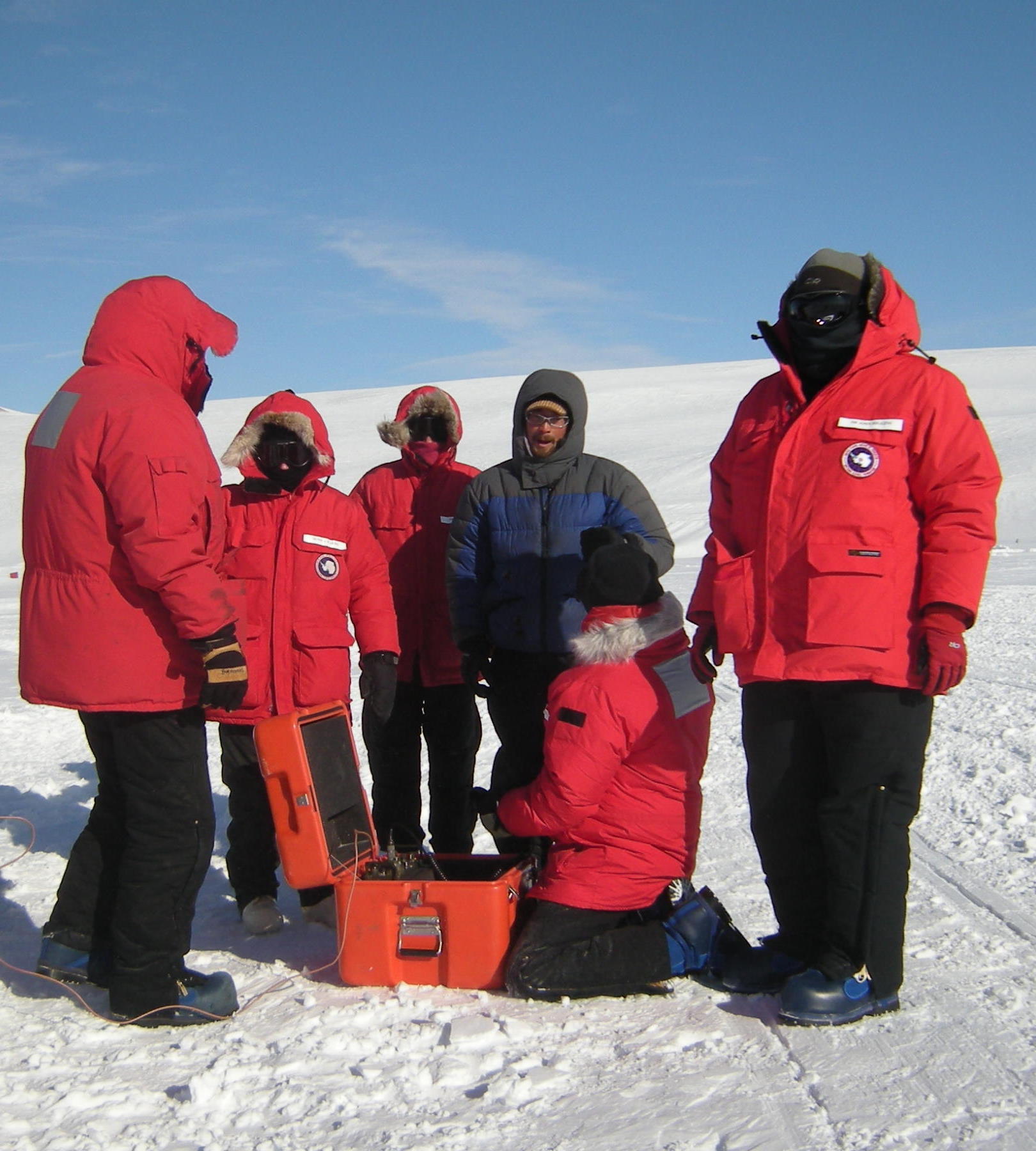
The next day we learned how to use emergency communication equipment: VHF hand-held radios and emergency HF radios. Cell phones don't work in Antarctica - no coverage - and Iridium satellite phones work poorly near the poles. Handheld radio will work well in the vicinity of McMurdo Station, but if you are deep in the field, the best option is a surprisingly low-tech option: the High Frequency Radio. An HF radio works by bouncing radio waves off the ionosphere, so as long as you know the the broadcast frequency and direction you can trim your antenna and communicate without having line-of-sight ability. Our HF radio seemed like it was from the Vietnam war era, and it felt like we were calling in an airstrike rather than calling the South Pole station and asking about the current weather conditions.
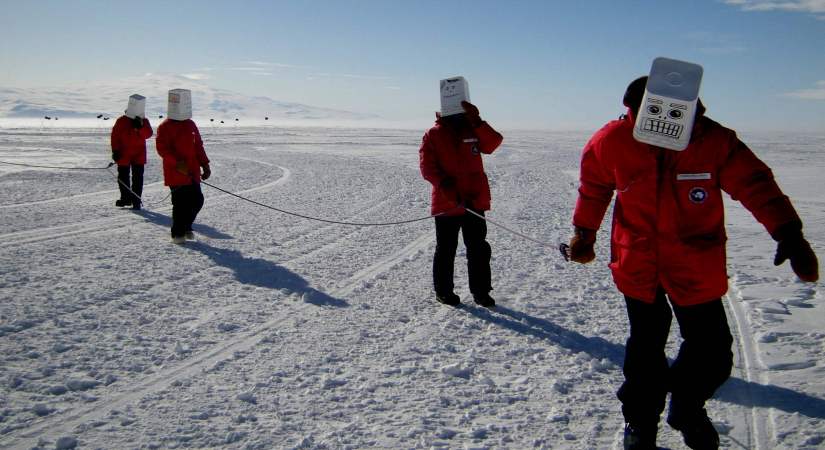
For our last exercise, we modeled what would happen if weather conditions deteriorated so badly that a white-out occurred. In Antarctica, whiteouts can occur with little warning, and are extremely dangerous, as the swirling snow will drop the visibility to zero, and it is easy to become lost and disoriented. To simulate the experience of trying to find someone in a whiteout, we did the famous bucket-head exercise: we roped up with buckets on our heads and tried to find a person within a few hundred feet of our instruction hut. The buckets are quite effective: you can't see anything, and your ability to hear and be heard is almost impossible with the wind. Despite the buckets, the wind and the cold, we actually found our person!
So now our group is all certified to leave McMurdo base and camp in the field. The next class on the horizon is sea-ice class, where we will learn how test the strength and thickness of sea ice as we take our sleds out onto McMurdo Sound. That will be tomorrow: until then — keep warm!